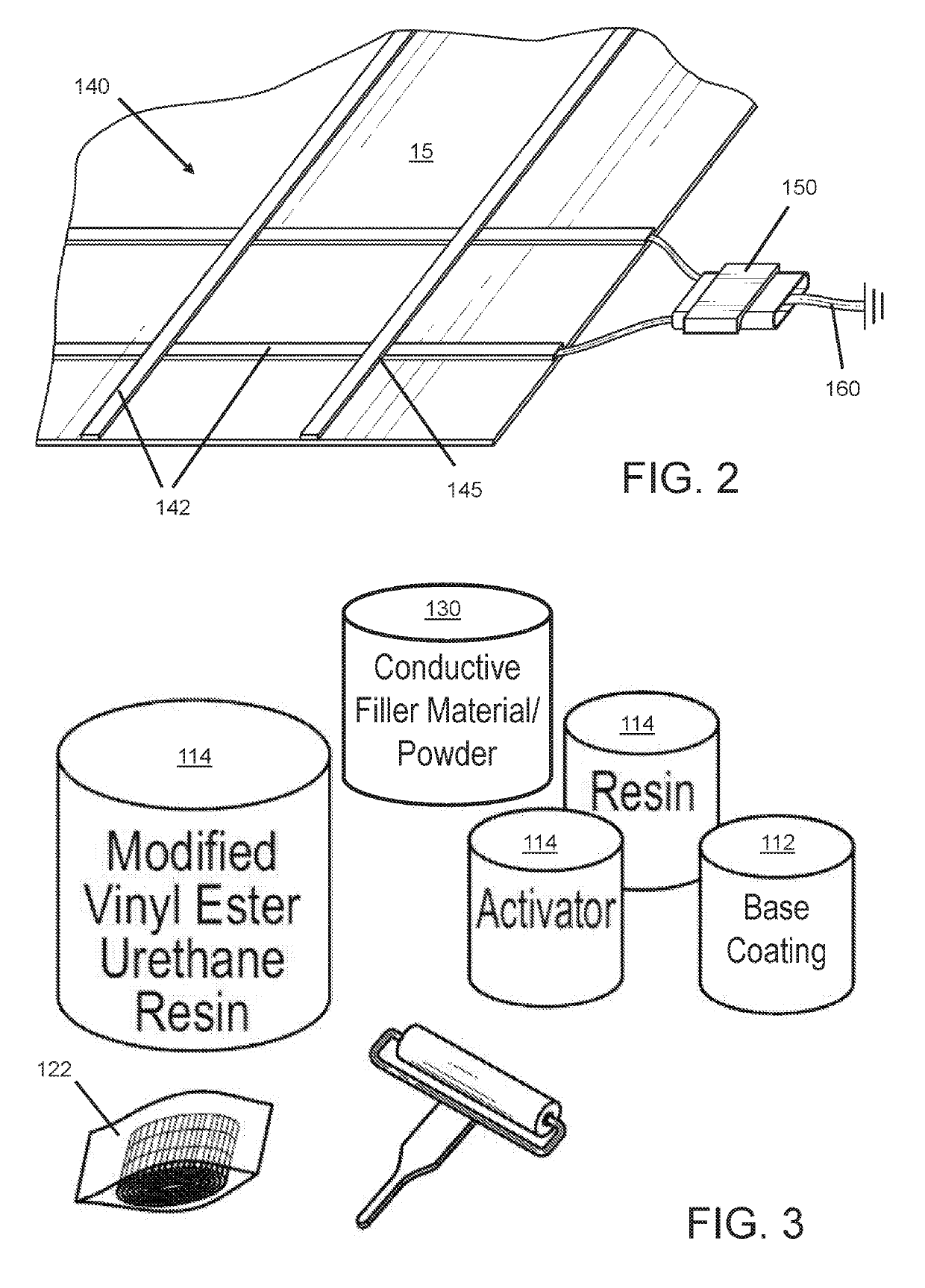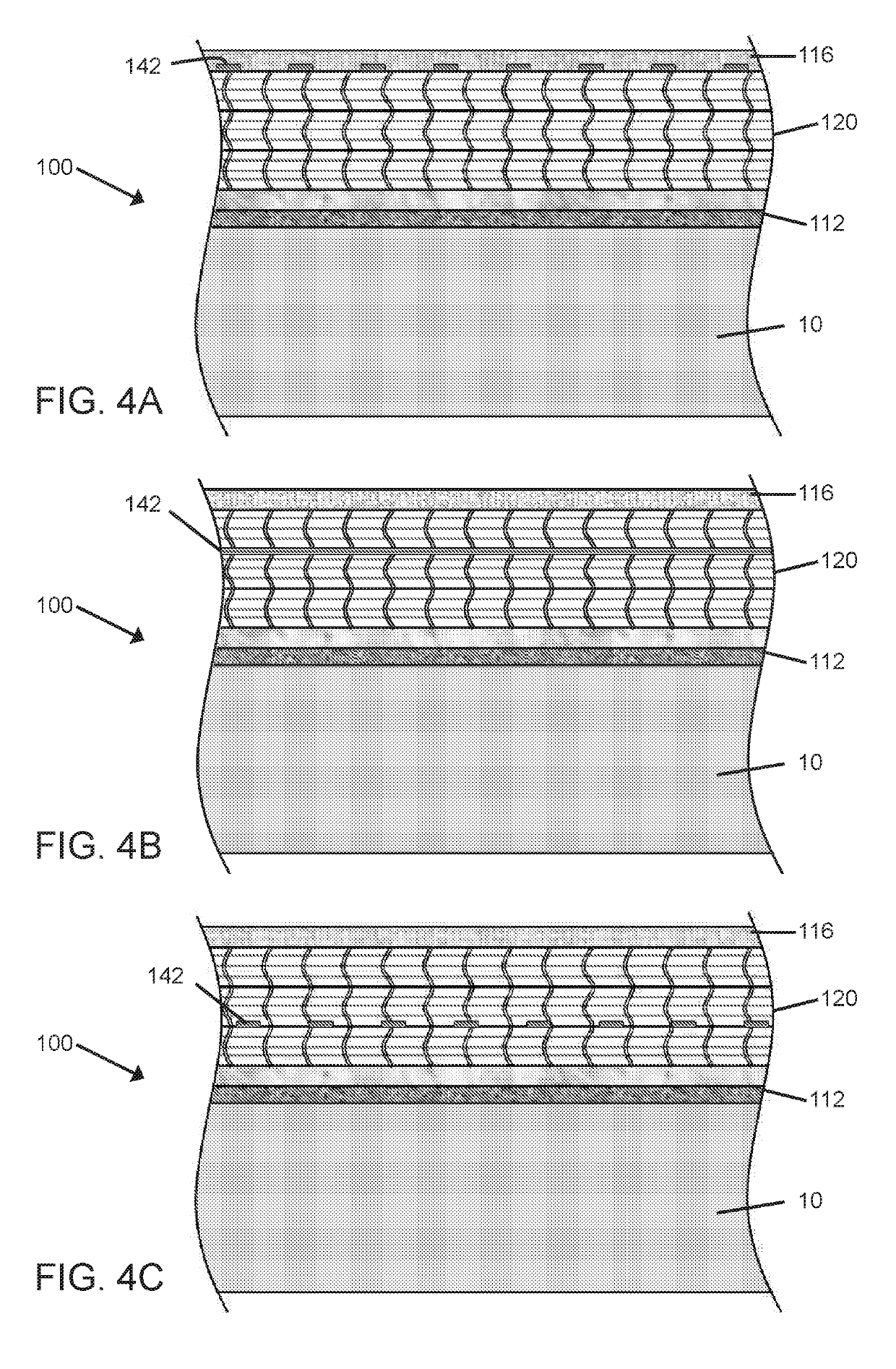Fiber reinforced systems with electrostatic dissipation
a fiber reinforced polymer and electrostatic dissipation technology, applied in the field of fiber reinforced polymer (frp) systems, can solve the problem of harmless ignition of static electricity, and achieve the effects of strengthening and strengthening a structure, dissipating static electricity to the grounding source of the structure, and restoring structural integrity
- Summary
- Abstract
- Description
- Claims
- Application Information
AI Technical Summary
Benefits of technology
Problems solved by technology
Method used
Image
Examples
Embodiment Construction
[0014]Following is a list of elements corresponding to a particular element referred to herein:[0015]10 structure[0016]15 surface of structure[0017]100 reinforcing and electrostatic dissipative (ESD) composite system[0018]110 fiber reinforced polymer (FRP) composite[0019]112 base coating[0020]114 polymer resin composition[0021]116 top coating[0022]120 reinforcing ply stack[0023]122 reinforcing fabric ply[0024]124 pocket[0025]125 pocket seam edge[0026]126 fiber tow[0027]128 filaments[0028]130 conductive filler material[0029]140 conductive network[0030]142 conductive wiring or tape[0031]144 conductive thread[0032]145 grid pattern[0033]150 connection clip[0034]160 grounding component
[0035]Dissipative materials allow the charges to flow to ground more slowly in a more controlled manner than with conductive materials. Materials considered to be static dissipative have a surface resistance of 1.0×104 ohms to 11 ohms and allow for dissipation of electrical charges generally within millisec...
PUM
| Property | Measurement | Unit |
|---|---|---|
| ohm's resistance | aaaaa | aaaaa |
| thickness | aaaaa | aaaaa |
| electrostatic dissipative | aaaaa | aaaaa |
Abstract
Description
Claims
Application Information
 Login to View More
Login to View More - R&D
- Intellectual Property
- Life Sciences
- Materials
- Tech Scout
- Unparalleled Data Quality
- Higher Quality Content
- 60% Fewer Hallucinations
Browse by: Latest US Patents, China's latest patents, Technical Efficacy Thesaurus, Application Domain, Technology Topic, Popular Technical Reports.
© 2025 PatSnap. All rights reserved.Legal|Privacy policy|Modern Slavery Act Transparency Statement|Sitemap|About US| Contact US: help@patsnap.com



